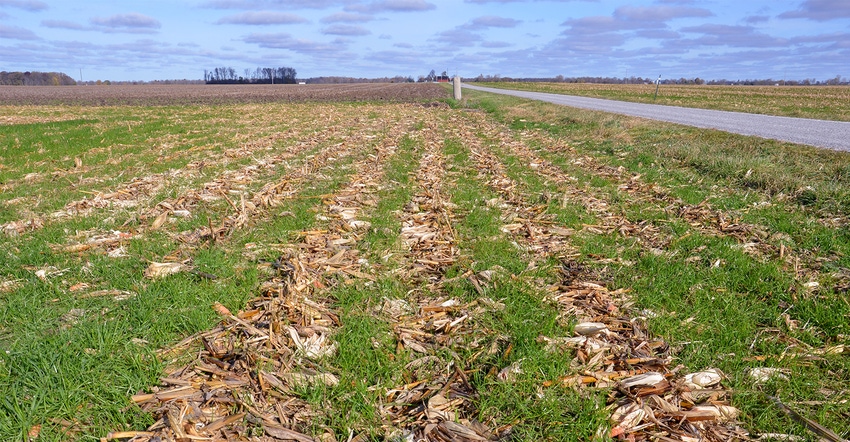September 4, 2017

Two good farming practices seem to stand out among things that went right this year. Some farmers were quite happy that they applied fall burndown herbicides last year, particularly onto cornstalks going to soybeans. It gave them clean fields to no-till drill soybeans into this spring.
On the other side of the coin, many farmers seem pleased with cover crops. The cover crop acreage in Indiana has surpassed 1 million and is still climbing. Many who use cover crops also no-till, and nearly all report improving soil health. Nearly all also report very little soil erosion over the winter.
Are the two diametrically opposed? Do you have to choose between applying fall herbicides to get a jump on marestail or planting a cover crop? Can you rely on the improved marestail control many farmers claim they get from cereal rye to tame the weed as well as a fall herbicide application would?
These are good questions, but there are few answers. And the answers depend upon whom you ask.
Some consultants contend it’s premature to say these two practices are mutually exclusive. Some note there are herbicide options you can spray over cereal rye in the fall without harming it, assuming you time the application correctly. There are no known options for spraying a cover crop if you include broadleaf or legume species.
Push the pencil
Bob Brewington farms near Versailles in southeast Indiana. He farms both gray flats and rolling soils that are subject to erosion. He’s partial to cover crops, especially after water coming off an adjoining field damaged a conservation structure this spring. Herbicides were applied on the soybean stubble after harvest.
Brewington pushed a pencil to see what he got for his investment in cover crops vs. what someone else got for their investment in fall herbicides. Checking prices at a local retail outlet, he estimated it likely cost more than $25 per acre for the fall burndown application, including application.
He invested just over $32 per acre to establish a cover crop on his own rolling soils. However, about $20 of the total was for potash, applied with the cereal rye. He applied 40 pounds per acre of rye.
The difference came in April when he compared the field with fall burndown to his own field where he had established a rye cover crop. The soybean stubble field was eroded, while his rolling field was covered by a growing cover crop.
Obviously, Brewington believes the scales tip toward cover crops as a better investment, and he documented numbers to prove it. But what would happen on other soils in other locations? Would cover crops still win on flat, level ground in central and north-central Indiana?
Those who believe in no-till plus cover crops to improve soil health say yes, and are moving forward. Those who are still in some form of conventional tillage and tired of battling tough weeds like marestail like what they’re getting for dollars spent on fall weed control. They point out that while erosion is possible, it’s often less of a concern on level soils following corn vs. following soybeans.
The final chapter has yet to be written on this debate. For now, you may have to decide which choice makes the most sense on your farm.
You May Also Like




